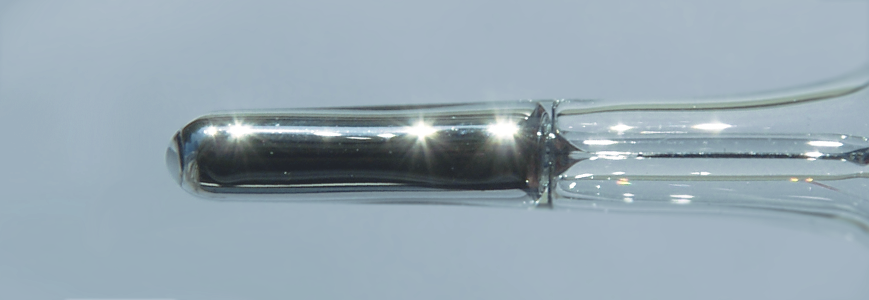Elemental Mercury - On Its Way Out

The Mercury Export Ban Act (MEBA) of 2008 prohibits federal agencies from selling or distributing elemental mercury.
Over the past few decades, increasing concern over the health and environmental hazards that mercury poses has resulted in strict regulation of its sale and distribution, both within the U.S. and internationally. This has helped reduce the use of mercury in many consumer goods, such as certain electronics and batteries, thermostats and thermometers, household appliances, and fluorescent light bulbs.
When possible, scientists would also like avoid working with mercury. Thanks to new efforts from NIST researchers, elemental mercury – which is disappearing rapidly from commercial thermometers – may soon be replaced as a temperature reference material.
Currently, mercury is used to define one of the 16 fixed points that make up the International Temperature Scale of 1990 (ITS-90), a temperature standard used to calibrate thermometers. One compound investigated by NIST scientists, sulfur hexafluoride (SF6), shows strong promise as a substitute: It is chemically inert, relatively inexpensive, and could serve as a “drop-in” replacement with minimal adjustments to the ITS scale.
This is still early work, and achieving performance on par with mercury will require improvements in the purity of SF6 used, as well as refinements to measurement technique. However, scientists are confident that future experiments will demonstrate the feasibility of SF6 replacing mercury as a temperature reference.
Contacts
-
PML webmaster

